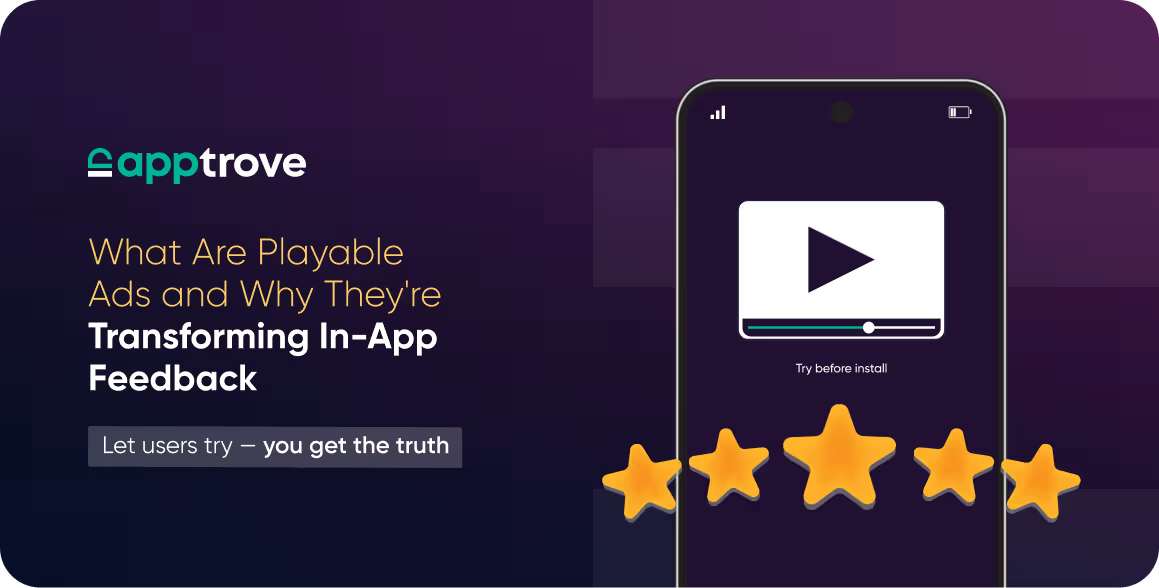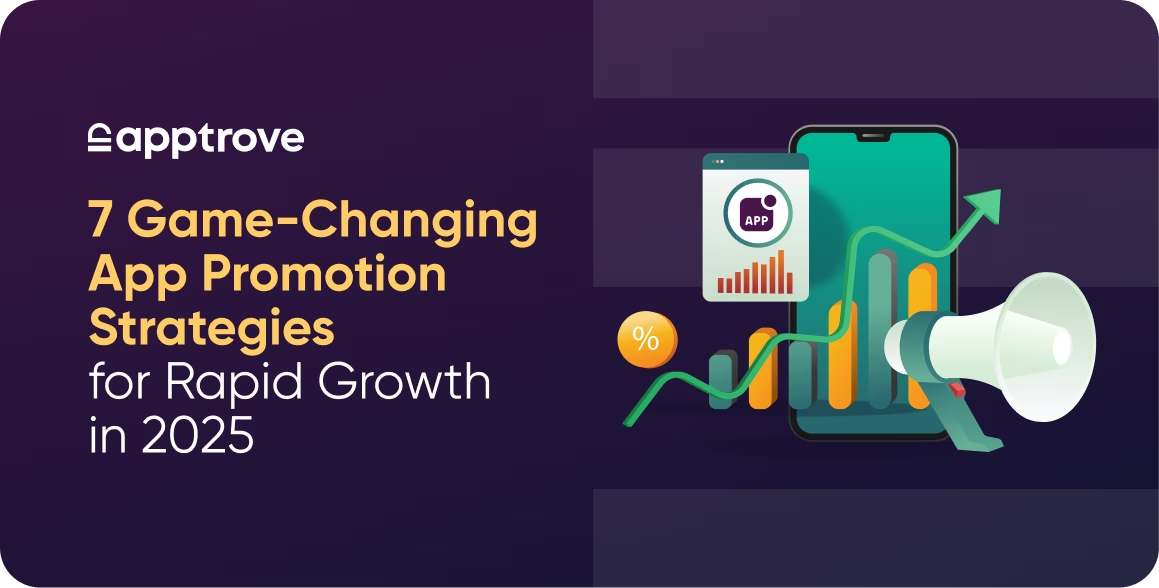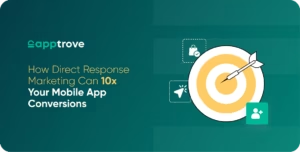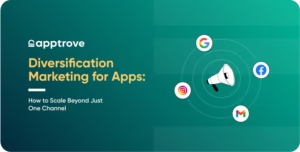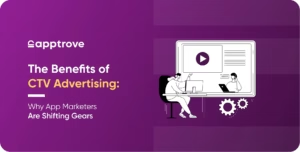If you’re still treating TV advertising like it’s 2012, it’s time for a serious upgrade. Everyone’s got a streaming subscription, and nobody’s watching ads, unless on a huge smart TV with surround sound and a bowl of popcorn. Nearly 9 in 10 U.S. households now own a Smart TV, opening the floodgates to endless streaming content and personalized ad experiences.
Welcome to the CTV age where ad fatigue finally meets its match and brands find a treasure trove of undistracted attention. Advertising on CTV is blowing up because it’s exactly what traditional TV wasn’t; personalized, trackable and unskippable. And if you’re a marketer, ignoring the benefits of CTV advertising isn’t just dangerous, it’s costly.
At Apptrove, we’re watching this shift closely (and if you’re someone who cares about mobile marketing, you are too). In the world of apps, mobile marketing, and performance campaigns, understanding how brands are owning CTV screens is your next unfair advantage.
This blog breaks down 8 of the strongest real-world CTV advertising examples that didn’t just land impressions, but sparked action, conversation, and serious loyalty. Whether you are launching a new app or scaling installs, these campaigns will enable you to build a CTV strategy that works.
What Makes CTV Advertising Stand Out?
CTV advertising, short for Connected TV advertising, is the delivery of video ads through internet-connected devices and enables consumers to stream content over-the-top (OTT). CTV devices could be smart TVs that come internet-enabled, game consoles such as the Xbox or Play Station, and streaming media players such as Roku, Apple TV and Amazon Fire TV (firestick).
CTV basically combines the OG TV experience with the modern-day technological advantages and gives the advertiser a more effective method of engaging with viewers in a more targeted and measurable way.
Typically, TV ad placements are never really precise as they are broad and based on network programming. CTV advertising allows for precise targeting using data, such as demographics (age, gender, etc.), interests, and viewing behaviors. Effectively, CTV truly enables brands to serve the right message to the right audience at the right time and thus improve ad campaign effectiveness mightily.
Moreover, CTV ads offer more interactive user experiences such as clickable CTAs (calls to action), lead generation forms, interactive surveys, etc. This makes a perfect environment for performance marketers to ultimately be able to measure ROI with data-driven insights.
Even though the “what” of CTV is by now well-understood, the “how” is where it gets intriguing. And for that, here are some CTV advertising examples that you should definitely not miss out on!
Learn the differences between OTT and CTV advertising in our detailed comparison.

8 Best CTV Advertising Examples Broken Down by Strategy
Let’s go from the theoretical to the practical brilliance. The CTV advertising examples below made more than just noise, they drove installs, engagement, and purchase intent across millions of smart screens. If you’re in fintech, gaming, ecommerce, or health tech, there are takeaways to learn from how these brands used CTV as a performance engine.
1. Amazon Prime Video: Citadel Campaign (2023)
Amazon invested huge dollars in promoting Citadel, their spy-thriller series. The CTV ads were leaned into the cinematic and energetic visuals and action-moments of a typical Hollywood blockbuster to generate buzz and make the show feel massive, and worthy of its production budget.
Amazon knew they had an audience of viewers scrolling to find their next obsession. Instead of longer trailers, they created a series of tight 30 second pre-roll CTV ads, with just enough of the story revealed to create curiosity. They paired ads with the most tightly defined audience using deep targeting (Amazon Prime Users + Thriller Fans) to reach the largest audience possible that it would resonate with.
2. Heineken: Virtual Cheers (2021)
This campaign ran during the pandemic when everyone was still socially distanced. The ad shows the clinking of beers, over zoom, which is an awkwardly funny representation of the time. A time we all experienced, and could all connected with emotionally.
Heineken leaned into the common shared experience of isolation but added humor. As a mid-roll, it popped up between shows and did a great job of reminding the audience they don’t have to go to a bar to feel the connectedness they are likely hoping to find. It was less about beer and more about a sense of togetherness, and that’s what created brand affinity.
3. Nike: You Can’t Stop Us (2020)
This one is the standard for emotional storytelling. Nike spliced together bits of footage of athletes from different sports, races, genders, and challenges at a level of synchronization that is almost unbelievable.
It was not an ad, it was a movement. Nike used the immersive format of CTV to take the viewer on a 90-second journey of resilience and a sense of unity. Placed mid-roll, viewers were paused, interrupting binge-watching with goosebumps. Talk about timing your intermission perfectly.
4. Uber Eats: Tonight I’ll Be Eating (2023)
This CTV spot was chaotic, in the best way. A random pairing of celebrities, who each revealed their go-to order on Uber Eats, essentially promoted the service. Andrew B. and Mike Myers were a weird pairing but it was surreal too and memorable.
Uber Eats relied on absurdity and massive celeb power to increase recall. The pre-roll format meant viewers couldn’t skip, and curiosity kept them from jumping. These ads were also often dynamically placed based on food/restaurant content contextually targeting FTW.
5. Sephora: The Unlimited Power of Beauty (2023)
Sephora developed some cinematic style CTV ads with clips of different women covering a broad range of ages, ethnicity, and life stages showing us that beauty rituals may change but the emotions around them remain timeless.
The key here was emotional storytelling. As a mid-roll ad it landed at times when the viewer attention was at levels of engagement that allowed for the message to resonate. Sephora’s goal was not to sell a product but to align with their brand identity as inclusive, empowering, and intimate.
6. Calm App: Breathe (2022)
You’ve just finished a nail-biting and adrenaline-fueled thriller episode and you’re catching your breath, only to be intercepted by Calm’s soothing “Take a deep breath” ad with a slow-motion waterfall.
Calm knew what they were doing with emotional state targeting. Their post-roll ad wasn’t interruptive or competing for attention. It allowed for an intentional exhale. It matched the platform’s wellness branding and made a nice, unobtrusive conversion nudge.
7. Samsung Galaxy Z Flip4: Join the Flip Side (2023)
Samsung went full Gen Z to the fullest extent with this one, with multi-hued sets, TikTok-like transitions, and a hyper-edited plot of everyone flipping their phones open with flair.
The aim was to make flip phones cool. Samsung shaped the pre-rolls to be more consumable for younger audiences, especially for those consuming tech, fashion, and pop culture. The CTV format’s large screen size helped the product’s sleek visuals shine.
8. The New York Times: Truth Is Worth It (2021)
Usually, journalism ads are not exactly riveting, but this one was different. NYT showcases the behind-the-scenes work of their reporters: emails, calls, traveling through conflict zones– all that later lead to the big headlines we see on the news.
The CTV format allowed NYT to unfold a real narrative in 60 seconds. The pacing was slow, deliberate and captivating. Also, as a mid-roll, it was prompting viewers to pause and reflect. It sold journalism as a heroic act, not just a subscription.
What the Best CTV Advertising Examples Have in Common
There is always a good strategy behind great CTV ads. When you look for insights beyond the brands, platforms, and KPIs, we can start to see similar patterns of behavior that are actionable for app marketers, growth teams, and UA teams. Here is what sets these campaigns apart from standard TV ads:
They don’t just show up, they show up strategically
Amazon Prime’s Citadel campaign wasn’t blasting trailers toward people randomly. They targeted Prime users explicitly enthused with the thriller genre. That precise targeting, not only the right audience, but the right format, is what converts impressions to actions.
They match emotion to moment
The best CTV advertising examples have been the ones that understand emotional timing, whether it’s Calm reminding viewers to breathe after a post-roll or Heineken wanting a virtual cheers in the middle of the pandemic. The format is more than visual, it’s visceral. Excellent campaigns push into where the viewer is mentally and emotionally.
They use storytelling to fulfill the promise
Sephora and The New York Times didn’t push a product. They promoted a message. And longer mid rolls allow them for more freedom to tell stories instead of just CTAs. And that’s what made the brand connection feel human, not transactional.
They see CTV as an extension of the funnel, not a stand-alone channel
Uber Eats used contextual placements like food shows for food delivery cravings and paired creative formats like pre-roll and deep mobile actions. Calm used its post-roll moment as a soft re-engagement metric. Both campaigns didn’t just lead to passive viewers, they had viewers clicking, scanning, and installing.
They test what others assume
The formats varied (mid-roll, post-roll, pre-roll), tonalities varied (funny vs emotional), and goals varied (brand recall vs direct installs). What brought them together was the science of experimentation. These brands didn’t guess what would work, but they tested, adapted and scaled what worked.
How CTV Advertising Examples Can Shape Your Next Campaign
Successful CTV ad campaigns do not simply demand your subscribers’ attention; they are also about engagement, building an emotional connection with viewers and simple conversions.
The biggest takeaway of all for marketers? CTV advertising has no competition when it comes to precise targeting, impactful storytelling, and finding the perfect place for interactive experiences and elements. By following great CTV advertising examples from brands like Samsung, Heineken, and Nike, you can adjust your approach and execute campaigns that not only cut through the noise, but develop meaningful, lasting connection with your audience.
Don’t underestimate the potential of CTV, it is not just an advertising channel, it’s the platform revolutionizing how brands are connecting with their customers.
Now, it’s time to make your move to dive into these CTV advertising examples and start your journey today! Your audience is already there, and they’re waiting for ads that are as engaging as the content they’re watching.
Frequently Asked Questions
1. What exactly is CTV advertising, and how is it different from traditional TV ads?
CTV (Connected TV) advertising delivers video ads through internet-enabled TV devices — like Smart TVs, Roku, Apple TV, gaming consoles, and streaming sticks. Unlike traditional TV, which relies on broad audience estimates and scheduled programming, CTV advertising offers precise, data-driven targeting, unskippable ad placements, and measurable viewer engagement. Think of it as a bridge between TV’s full-screen immersion and digital marketing’s precision.
2. Why are brands investing in CTV advertising in 2025?
That is because Connected TV combines reach, relevance, and ROI. As 88%+ of U.S. households now own a Smart TV, CTV offers unmatched screen real estate, but with targeting tools borrowed from digital platforms. Brands are able to go beyond awareness and actually drive installs, purchases, or re-engagement, which wasn’t possible through linear TV. Add to that interactivity (like CTAs and QR codes), and it’s no surprise CTV ad spend is booming across verticals.
3. What do the best CTV advertising examples have in common?
Across campaigns from brands, several patterns emerge:
– Strategic timing (pre-roll, mid-roll, or post-roll based on viewer mindset)
– Emotional alignment with content or platform context
– Interactive formats that drive clicks, installs, or surveys
– Data-led targeting by interest, behavior, or device
– Test-and-learn approach to creative formats and placements
These aren’t just TV spots, they’re smart, performance-optimized experiences.
4. How does CTV advertising support performance marketing goals like installs or conversions?
Unlike linear TV, CTV campaigns can be paired with QR codes, click-through overlays, deep links, and retargeting strategies to drive specific outcomes like app installs, product purchases, or account sign-ups. Some CTV platforms also support cross-device attribution, so when a user sees an ad on their TV but converts on mobile, it’s tracked, making CTV highly relevant for UA and performance teams.
5. How do I measure success in a CTV advertising campaign?
Key CTV ad metrics include:
Impression delivery & completion rate (how many viewers watched till the end)
View-through rate (VTR)
Click-through rate (CTR) or QR scans
Install or conversion lift
Cross-device attribution (especially for apps and mobile-first brands)
Platforms like Apptrove help unify these insights, so you can track how many installs or purchases actually came from a CTV ad.

